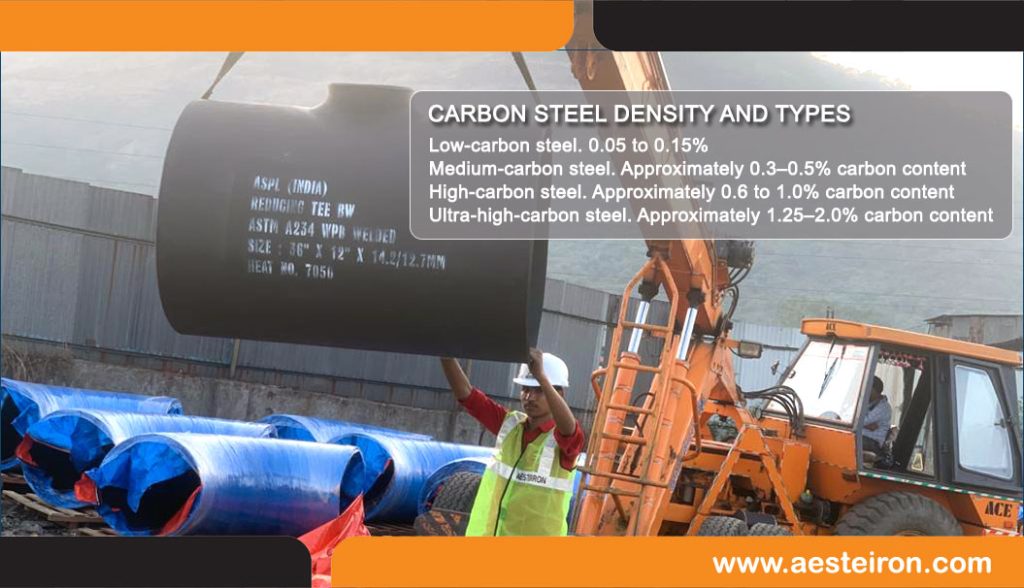
Introduction to Carbon Steel
Carbon steel is an alloy primarily composed of iron and carbon, with carbon content ranging from 0.12% to 2%. Depending on its intended use, carbon steel comes in various forms, each offering unique advantages. One of its most notable benefits is the enhanced strength and hardness it imparts to the material. Due to its versatility and adaptability, carbon steel remains a popular choice among manufacturers.
Why is Carbon Steel Density Significant?
Understanding carbon steel density is crucial for many engineering and manufacturing processes. It plays a vital role in determining the weight of components, the strength-to-weight ratio, and overall structural integrity. This knowledge helps ensure that designs are both efficient and effective.
Factors Influencing Carbon Steel Density
- Carbon Content: The amount of carbon directly impacts the steel's density, altering its physical properties.
- Heat Treatment: Processes like annealing or quenching can modify the internal structure of the steel, thereby affecting its density.
- Temperature and Pressure: Environmental conditions during production can influence how dense the material becomes.
- Microstructure: Variations in grain size within the steel microstructure contribute to differences in density.
- Surface Treatments: Coatings or treatments applied to the surface can subtly alter the density of the steel.
Measuring Carbon Steel Density
Calculating the density of carbon steel depends on the specific form it takes—whether round bars, pipes/tubes, or plates/sheets. Here’s how you can determine the density for these forms:
Carbon Steel Round Bars:
To calculate the density in kilograms per meter:
Formula: Outer Diameter (OD) in mm × Outer Diameter (OD) in mm × 0.00623
Example: For a bar with an OD of 80mm:
(80mm × 80mm) × 0.00623 = 39.872 kg/meter
Carbon Steel Pipes/Tubes:
Formula: (Outer Diameter - Thickness) × Thickness × 0.0248
Example: For a pipe with an OD of 88.9mm and thickness of 3.05mm:
(88.9mm - 3.05mm) × 3.05mm × 0.0248 = 6.49 kg/meter
Carbon Steel Plates/Sheets:
Formula: Width in mm × Length in mm × Thickness in mm × 0.00000784
Example: For a plate measuring 6mm thick, 1250mm wide, and 2500mm long:
6mm × 1250mm × 2500mm × 0.00000784 = 147 kg per piece
How Does Density Impact Carbon Steel Properties?
Density is a critical factor in determining several key properties of carbon steel:
- Strength-to-Weight Ratio: High density combined with inherent strength results in an excellent strength-to-weight ratio, making it ideal for applications like aircraft construction where lightweight materials are essential.
- Corrosion Resistance: While not as corrosion-resistant as stainless steel, carbon steel’s density contributes to forming a protective oxide layer that guards against environmental damage.
- Machinability: Carbon steel’s relatively low density compared to other metals like titanium makes it easier to machine and shape into desired forms.
- Thermal Conductivity: The density of carbon steel affects its ability to conduct heat efficiently, impacting its suitability for certain industrial applications.
- Formability: Higher density typically means better formability under pressure, allowing for complex shapes without compromising structural integrity.
- Weldability: The density of carbon steel influences how well it welds, affecting joint strength and durability.
- Fatigue Strength: Materials with higher densities often exhibit superior fatigue strength, meaning they can withstand repeated loading cycles without failure.
- Sound Absorption: In some cases, the density of carbon steel can influence its acoustic properties, making it useful in soundproofing applications.
Conclusion
Anyone working with carbon steel should be well-versed in its density, as this property significantly impacts strength, weight, and overall performance. Manufacturers and engineers rely on accurate density measurements to select the right products for their applications, ensuring reliability and quality in the final product. Understanding these nuances allows professionals to optimize their designs while maintaining cost-effectiveness and efficiency.
PET Metalized Silver Thermal Lamination Film
Silver Lamination Film,Reflective Silver Pet Film,Metalized Pet Laminating Sheet,Silver Finish Pet Laminate
JIANGYIN HONGJU NEW MATERIALS CO.,LTD , https://www.hongjuspecialfilm.com
